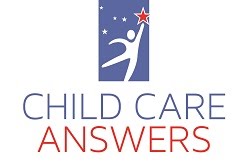
With the falling snow and colder temperatures we have had several calls asking about guidelines for outdoor play. The rule of thumb for cold temperatures is that with the windchill considered 25 degrees and below is too cold for children to play outside. Our inclusion specialist wanted to urge providers to make sure that even if it's only for a few minutes to try and get children outside for fresh air. Fresh air is so much healthier for the children than being inside all day and is important for them to get everyday.
Below is some safety tips given from the American Academy of Pediatrics for the cold weather.
Below is some safety tips given from the American Academy of Pediatrics for the cold weather.
- Dress infants and children warmly for outdoor activity. Several thin layers will keep them warm and dry. Don't forget warm boots, gloves or mittens and a hat.
- The rule of thumb for older babies and young children is to dress them in one more layer of clothing than an adult would wear in the same conditions.
- Hypothermia develops when a child's temperature falls below normal due to exposure to colder temperatures. It often happens when a youngster is playing outdoors in extremely cold weather without wearing proper clothing or when clothes get wet.
- Frostbit happens when the skin and outer tissues become frozen. This condition tends to happen on extremities like the fingers, toes, ears and nose. They may become pale, gray and blistered. At the same time the child may complain that his/her skin burns or becomes numb.
- Cold weather does not cause colds or flu. But the viruses that cause colds and flu tend to be more common in the winter, when children are in school and are in closer contact with each other. Frequent hand washing and teaching your child to sneeze or couch into the bend of their elbow may help reduce the spread of colds and flu.
- Remember that the sun's rays can still cause sunburn in the winter. Make sure to cover your child's exposed areas with sunscreen.
For the complete list of safety tips visit the American Academy of Pediatrics web page.









No comments:
Post a Comment